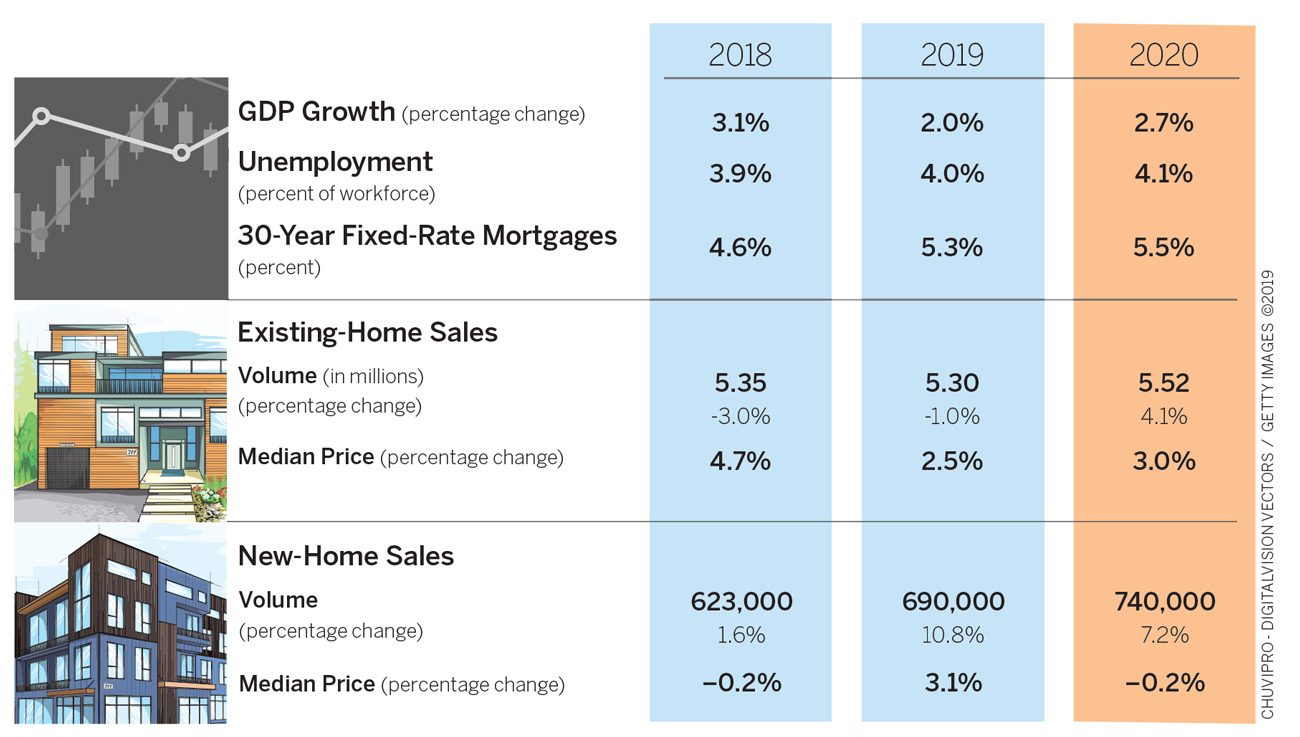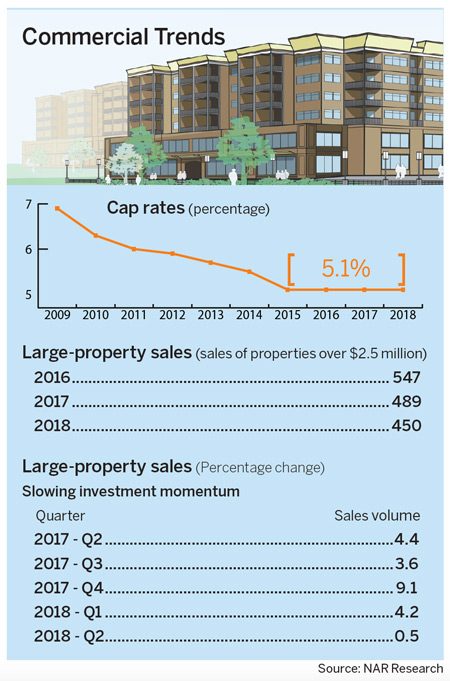2019 Economic Outlook: Residential Growth of a Quiet Sort
2019 Economic Outlook: Residential Growth of a Quiet Sort
In most areas, sales and price appreciation will remain steady.
January - February
2019

Source: NAR Research
Despite rising interest rates and weakening buyer enthusiasm, continuing economic gains mean 2019 will look much like 2018 regarding the strength of the residential market, NAR Chief Economist Lawrence Yun predicts. “It’s going to be more of the same, in terms of growth,” he says.
A wild card is the growing threat of recession fueled by a trade war with China and other countries, but it’s too soon to see how that plays out. “Stock market volatility caused by talk over a trade war is not good,” Yun says. “But economic fundamentals remain strong and should stay that way if normal trade patterns continue.”
Home sales, combined existing and new, are expected to increase a little less than 1 percent, from 5.97 million to 6.1 million. Helping to drive the increase are gains in new-home sales, from 623,000 to 690,000, as builders accommodate the country’s growing population. “Builders will build just because of the accumulated pent-up housing demand over the years from the rise in population,” says Yun.
He’s forecasting starts to rise from 1.26 million to 1.32 million, helping to ease some of the housing shortages that have plagued many markets in the past several years. But the relatively smooth rise won’t be felt evenly across price points and housing markets. Shortages for homes at lower price points will persist, which is the segment where demand remains strongest. That will keep upward pressure on prices, adding to affordability woes for first-time and moderate-income buyers. Inventory shortages have been less of a problem with higher-end homes, so price gains will be slow compared to what’s happening with lower-cost homes.

On the commercial side, practitioners specializing in leasing and property management will continue to do well. The economy is generating a wide range of jobs, keeping upward pressure on demand. But commercial specialists involved in investment transactions will need to be careful. Rising interest rates and a similar rise in cap rates will lead to some shaving in property values. The transaction volumes of properties valued at $2.5 million and above have already started falling. Investment deals in markets outside big urban centers are holding up better and should continue to stay solid. (See Commercial Trends charts.)
Two markets that can expect a strong boost in property values, both residential and commercial, are Arlington, Va., and Queens, N.Y., which are the newly named locations for online retail giant Amazon’s headquarters expansion. Property owners should benefit as the areas see an influx of highly skilled, well-paid employees. But Amazon’s arrival will force local rents to rise, which will hurt other workers whose wages are lagging.
Tax Law Impact
Also dampening price gains of expensive homes are changes to federal tax deductions enacted at the end of 2017. The Tax Cuts and Jobs Act lowers the cap on the mortgage interest deduction from $1 million to $750,000 and also places a $10,000 cap on state and local tax deductions. Those caps could cut into the tax benefit for many owners of costly homes, especially if they’re in states with high property taxes. Increases in the standard deduction mean that fewer owners will be opting to itemize their deductions any way.
Yun says in pricey markets, like some suburban areas of Chicago, owners are starting to have trouble finding buyers who don’t want to put a lot of money into a house if they can’t fully deduct property taxes. “We have to wait for actual data to come out, but anecdotally, the tax law might be playing a role in slowing sales of upper-end homes,” he says.
Look for price gains to slow in once-hot markets like Denver; Seattle; Austin, Texas; and the San Francisco Bay Area. Costly bedroom communities in high-tax states such as New Jersey, Connecticut, and Illinois could experience price reductions. Outside of these pockets, prices are expected to show the same modest gains as those of the last few years, so look for existing-home appreciation of 2 to 3 percent in 2019 overall.
Yun sees interest rates continuing to rise moderately, from about 4.8 percent at the end of 2018 to 5.5 percent by the end of 2019. But because builders are stepping up starts and the broader economy is expected to stay on a steady upward trajectory, the rise in interest rates shouldn’t have a dampening effect. Look for the economy to grow 2 percent and job gains to remain solid at 1.5 million.
It’s not just the solid economy that will keep housing on an even path, Yun says. Mortgages over the past decade or so have been among the best-performing ever, thanks to solid underwriting by lenders. As a result, delinquencies and foreclosures are expected to remain low.
“Housing remains our nation’s best and safest wealth builder over the long term,” Yun says. “The market this year will not be exciting, but it will be solid and in positive growth territory. Only in previously hot markets will we see some slowdown, and that is not a bad thing, because it will help put prices more in line with people’s ability to buy.”
Source: https://magazine.realtor/news-and-commentary/economy/article/2019/01/2019-economic-outlook-residential-growth-of-a-quiet-sort